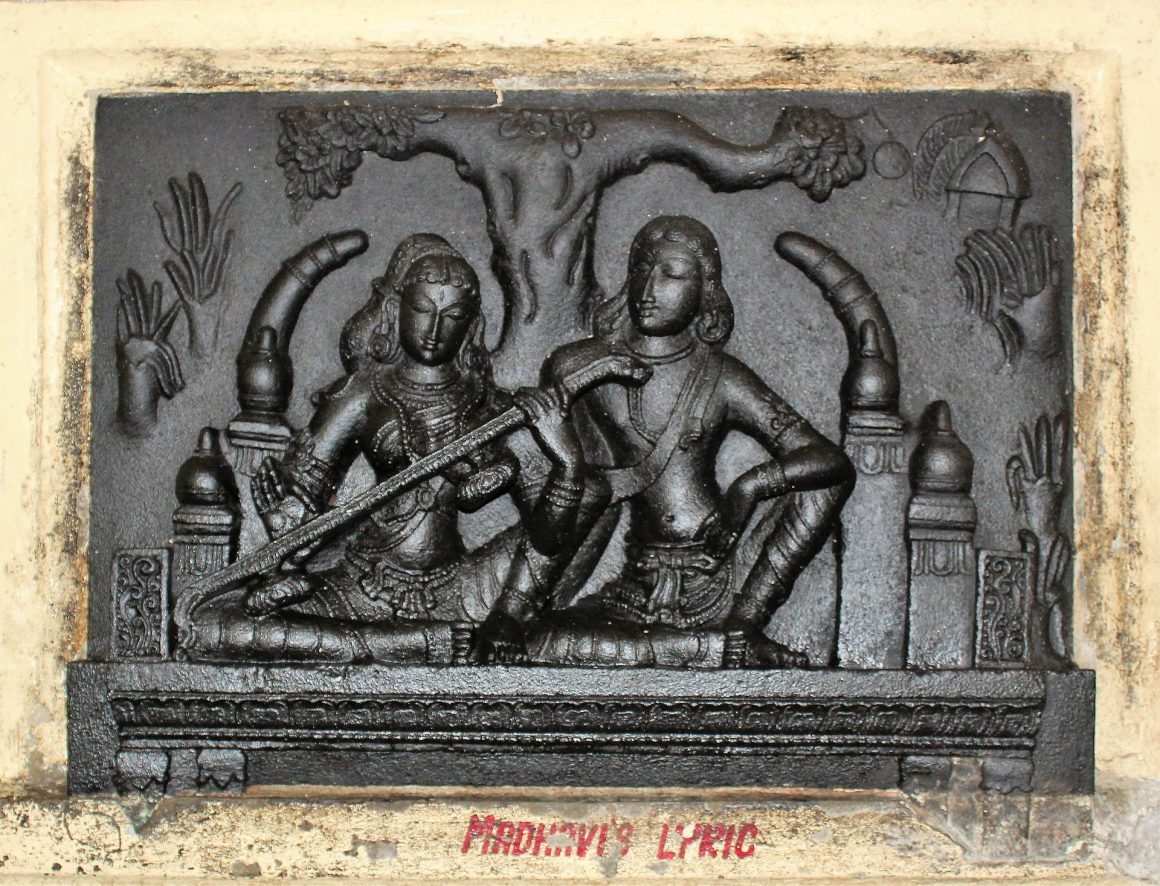The History of Tamil Classical Dance
The history of Tamil classical dance can be traced back to the Tamil epic Silappadikaram (2nd-century CE) during the Sangam period of Tamil literature. In Silappadikaram, the protagonist Kovalan falls in love with the famous Tamil classical dancer Madhavi. Silappadikaram has elaborate details of Tamil classical dance and music.
The foundation of Tamil classical dance was divinity. The Chola empire, famous for its temple architecture, developed Tamil music and Tamil dance in temples through the Devar Adiyar system. Devar Adiyar, or Devar Adigalar, means Servants of the Divine, which includes both males and females. The Chola empire developed the music and dance tradition during the temple festivals. Inscriptions indicate that 400 dancers, their teachers, and orchestras were maintained by the Brihadeesvarar temple in Thanjavur with generous grants. The Chola empire expanded in wealth and size, influencing other kingdoms in India to follow similar Devar Adiyar systems in their countries. Devar Adiyars had a high rank and dignity in society, were seen as the arts’ protectors, and were affluent. Royal patrons provided them with land, property, and jewelry gifts during this period.
The Devar Adiyar system collapsed in Tamil Nadu after the decline of the Chola and Pandyan dynasties. In later periods, when foreign dynasties ruled Tamil Nadu, this Devar Adiyar system transgressed and became the infamous Devadasi system. During the British occupation of India, the Devadasi system and the Sadiraattam – a name given by the Maratha rulers of Thanjavur to the temple dance – were banned due to various social issues and taboos associated with them.
Krishna Iyer, a freedom fighter and classical artist, lead the movement to support the Sadiraattam during the 1930s. While he opposed the Devadasi system, he supported girls learning the dance as an art form. To give the dance a measure of respect, E. Krishna Iyer and Rukmini Devi Arundale proposed a resolution. At a 1932 meeting of the Madras Music Academy, they proposed to rename Sadiraattam as “Bharatanatyam,” or Indian classical dance.
Though Bharatanatyam is a popular dance style which leaves behind the taboo of Sadiraattam, critics say the affluent appropriated the art of Devadasis to create the new form of dance.
The History of Arangetram
The word Arangetram in Tamil means “to ascend the stage by a Tamil classical dancer to complete formal training with the teacher.” The dancer can now move forward and pass on the art form to other aspiring art learners. The Arangetram is a traditional pathway for a dancer to perform alone or train other dancers. The 2nd century CE Tamil epic Silappadikaram elaborately speaks about the Arangetram of Madhavi, a famous Tamil classical dancer, in a chapter called “Arangetru Kaathai.”
Bharatanatyam mainly consists of mythological stories and ancient lore. The margam created in the 18th century by the Thanjavur Quartet or Thanjavur brothers is still followed in the modern-day Bharatanatyam recitals commencing from invocation dance Alarippu, followed by Jathiswaram, Sabdham, Varnam, Padams, and Thillana.

Leave a Reply